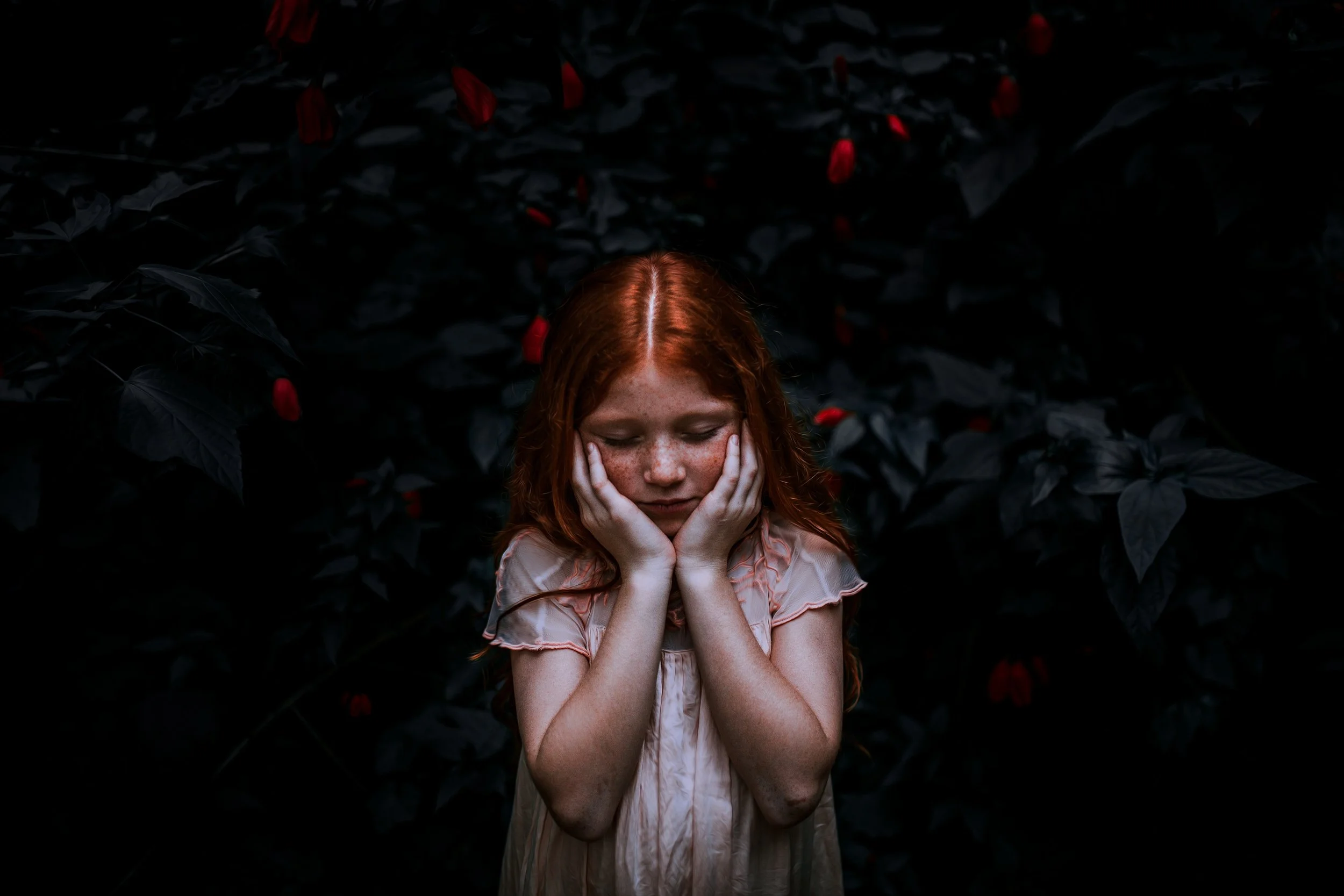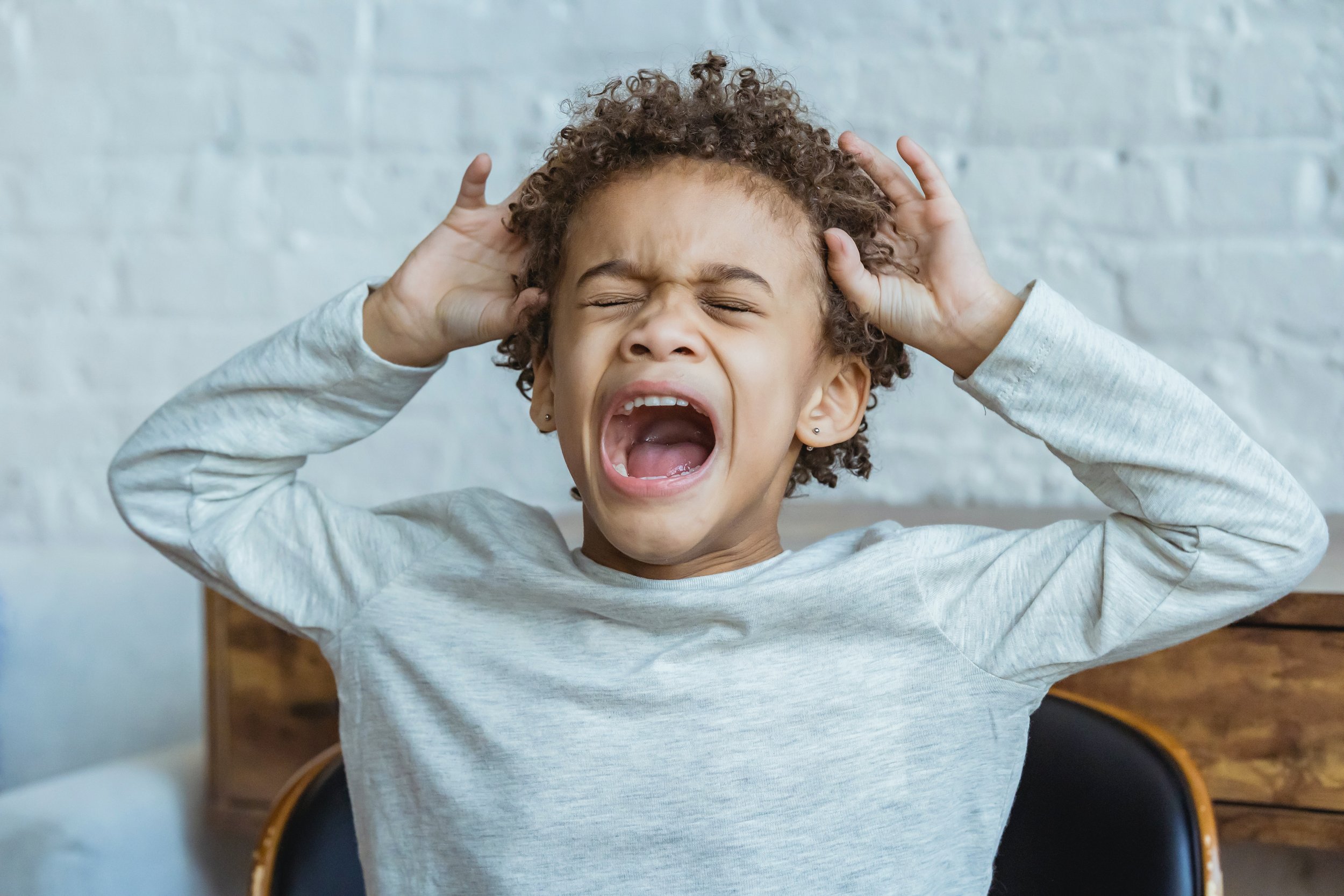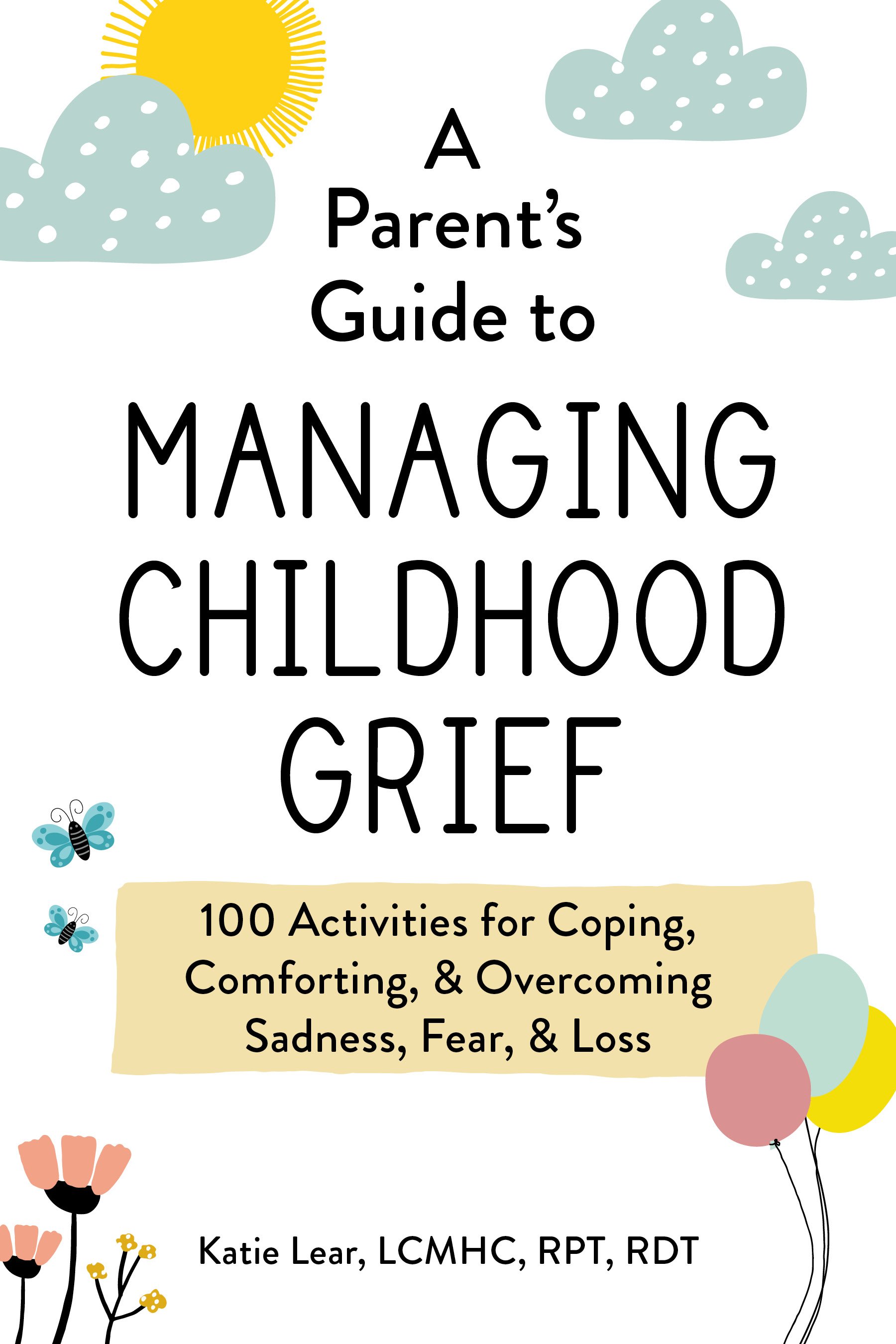It’s hard to take something as huge and overwhelming as grief and divide it up into neat stages. The truth is, grief is a lifelong process. It never truly ends, and it’s impossible to wrap it up into a neat package with clearly defined steps. This is especially true for grieving children, who may need to revisit their feelings again as they grow older and understand their loss in a deeper, more permanent way.
Children may grieve differently than adults do, but that doesn’t mean they don’t grieve at all. Even preschool-aged children can have very deep, complicated feelings about death. Although they may not follow a tidy, 5-step process, kids may experience some or all of the grief stages as they process their loss.
Even though “real life” grief is more complicated than any model, it can still help to be familiar with these stages. If you’re a parent or caregiver, knowing about common grief reactions in advance can help you be better prepared to support your child. This post will outline the 5 stages of grief, as well as how children commonly express them, so you can better recognize the signs in your own child.
How Did We Come Up With the 5 Stages of Grief?
Grief has existed in every culture on earth, but we haven’t always thought about it as being divided into stages. In the United States, we sometimes have difficulty thinking and talking about death at all. The 5 stages were created by Dr. Elisabeth Kübler-Ross, a psychiatrist, to help doctors, dying people, and their loved ones think and talk about this difficult subject.
Dr. Kübler-Ross spent her career studying death and dying, and developed the 5 stages after working with terminally ill patients. The stages—denial, anger, bargaining, depression, and acceptance—are based on the emotions she observed these patients working through as they faced their own illness and death. She hoped that learning about these feelings would lead to more compassion and better care for people dealing with terminal illness.
So, these stages were not originally meant to be for grievers. They were also not meant to be for children. And yet, so many people found the stages helpful, that the idea has spread and been applied to many different situations. You’ve likely heard people talk about the “stages of grief” in casual conversation, and they’ve even been mentioned on TV shows like Gray’s Anatomy.
Do Children Have to Go Through the 5 Stages in Order?
As the stages of grief became more popular, people began to make assumptions about them. Many people mistakenly believe that a person has to go through the 5 stages in order, starting with denial and finishing with acceptance. The way the stages are organized can also make grief seem like a linear process, with a clear beginning and an end.
This isn’t a very helpful or accurate way to look at grief. It can make it seem as though there’s a “right” or “wrong” way to grieve. People who are mourning a loss may worry that they aren’t handling their feelings the right way if they don’t exactly match up with the model, or if they grieve for a long time.
Children do not have to go through the stages in order, and they most likely won’t. It is possible for a child to experience multiple stages at once, to seemingly skip a stage entirely, or to feel as though they’re in one stage on one day and a different one the next. Kids might spend a long time in one stage and eventually move through it, only to revisit it again at a later time. Finally, just because a child has accepted their loss, it doesn’t mean they won’t experience anger, sadness, or other painful feelings again as they grow up.
Children Express Grief Stages Differently Than Adults
Children’s grief may be as deep as an adult’s, but they may express their feelings in different ways. Their capacity to deal with big feelings tends to be smaller, so children may not sit in their grief for long periods of time like an adult does. Instead, it’s common to see kids moving in and out of their grief, and balancing moments of deep emotion with periods where they seemingly get back to “normal” life.
For example, a grieving adult may feel intense sadness for weeks, but a grieving child might cry intensely for an hour and then ask to go outside to play. This doesn’t mean the child has stopped grieving, it just means they’ve reached their capacity for now. They’ll come back to their grief again when they feel ready.
Death is a hard concept for young children to understand, and this can influence how they grieve, too. As children grow up, they’re better able to think about abstract ideas like the afterlife, and understand that death is truly permanent. New milestones and life stages will also heighten a child’s awareness of everything they are missing out on with their loved one. This may prompt children to re-grieve their loss as they grow up and understand things on a deeper level.
Finally, kids show their big emotions in different ways that may be hard for adults to recognize as expressions of grief. Separation anxiety, clinging, nightmares, acting babyish, tantrums, and problems paying attention at school can all be symptoms of childhood grief. Let’s take a look at each of the 5 stages and the unique ways that children work through them.
Stage 1: Denial in Children
All feelings exist for a reason: even painful and “negative” emotions serve a useful purpose. Denial protects children from getting completely overwhelmed by grief. At times when taking in the full reality of what happened is too much to bear, denial and shock can help cushion the blow.
Denial doesn’t necessarily mean that a child completely ignores the fact their loved one has died. It just means that at any given moment, they might not be fully absorbing the loss. While it’s common for children to experience this type of shock right after learning about a death, it can happen at any time.
In children, denial can look like:
Appearing to have little or no response to the news that a loved one has died
Asking when their loved one is coming back home
Thinking they have spotted their loved one in a crowd
Taking breaks from grief to play, socialize, or return to “normal life”
Avoiding telling friends or teachers about the death
For young kids, denial is complicated by the fact that they have a limited understanding of death. Little children may ask about a loved one returning home even after they’ve moved through this stage, because they don’t yet understand that death is final. No matter your child’s age, denial is a normal and healthy response. Most children will move past this stage on their own when they are ready to address deeper, more painful feelings.
Stage 2: Anger in Children
Even in the best of times, anger can be a difficult emotion for parents to deal with. It’s easy to comfort a crying child, but harder to figure out what to do when your griever seems to be pushing you away. But grieving children have a lot to be angry about.
Death is often a traumatic event for children, sending the brain into fight or flight mode in an attempt to keep the child safe. Kids who tip over into the “fight” side of fight or flight may find themselves filled with energy that comes out as anger.
Anger is also a way that children can take feelings of helplessness or fear and turn them into something more active. Death is terrible and unfair, and we’re powerless to stop it. Expressing anger gives children an opportunity to speak their mind, try to find answers, and take charge at a time when they may feel very out of control.
In children, anger can look like:
Irritability, tantrums, and defiance at home or at school
Getting into fights with siblings or peers
Feeling mad at God for taking a loved one away
Expressing anger toward the deceased for abandoning them
Blaming doctors or other caregivers for not doing more to help
Feeling jealous of other kids whose loved ones are still alive
Turning the anger inward by feeling guilty or ashamed
Parents should know that children often worry that they have done something to cause their loved one’s death. It’s common for young children to believe that mean or angry thoughts or words can cause bad things to happen. You can help your child understand that nothing they said, did, or thought had anything to do with their loved one’s death.
Stage 3: Bargaining in Children
Bargaining is a little bit like denial, and a little bit like guilt. Kids in the bargaining stage of grief are trying to make sense of reality while still holding on to the idea that somehow, things could be different. They may wish that their loved one had never died or could be brought back to life. Or, they may simply wish they could stop feeling so much pain and be a normal kid with a normal family again.
This stage involves trying to change yourself, change the past, or make a deal with God to make things better. Kids in this stage may go over what happened in the day or weeks leading up to their loved one’s death, trying to figure what could have been done differently. You can expect lots of “woulda, coulda, shoulda” statements, especially from older kids, during this stage.
In children, bargaining can look like:
Trying hard to be a perfect child (so that maybe their pain will go away)
Avoiding showing negative feelings
Regretting things they failed to do or say when their loved one was alive
Repeatedly searching for ways their loved one could have lived if things had been different
Asking God to bring their loved one back
Bargaining may be harder to spot in children than some other stages of grief, because children may not always share these thoughts out loud. You can help your child by reminding them that these kinds of thoughts are normal after someone dies, and not a sign that we did anything wrong.
Stage 4: Depression in Children
Even though grief can contain many emotions, when most of us think of grieving we imagine a deep sadness. Depression is the most common emotion that grievers experience, whether they are kids or adults. Crying, low mood, hopelessness, and feeling empty or numb are all ways that this stage can manifest.
However, going through depression during grief doesn’t mean a person has a mental health condition like Major Depressive Disorder. The sadness that comes with grief is a natural part of the healing process, and most children will be able to work through it on their own in time.
In children, depression can look like:
Not wanting to do things they used to find fun, like sports or after school clubs
Changes in sleeping and eating habits
Spending more time in their room, instead of hanging out with friends or family
Body symptoms, like headaches and stomach aches
Frequent crying
Some depression symptoms can be a sign of more serious problems that need the attention of a therapist or doctor. If your child copes with their depression by cutting, shares that they’ve been thinking of suicide, or tells you repeatedly that they wish they could join their dead loved one, seek help. You can search online for local children’s therapists, or speak to your child’s pediatrician to figure out next steps.
Stage 5: Acceptance in Children
Reaching the acceptance phase of grief doesn’t mean a child is okay with what has happened. A child can be aware of how sad and unfair their loss is and still be in this stage. Instead, acceptance is about finding ways to keep moving forward in life while continuing to grieve. Children who are in this stage are able to acknowledge their loved one’s death really happened, and that their loved one isn’t coming back. They are adjusting to their new life, and discovering moments of joy and normalcy mixed in with the sadness and loss.
This stage is last on the list because grievers often need to work through many of their harder feelings in order to reach a place of acceptance. However, that doesn’t mean acceptance is the end of grief. It’s possible to cycle in and out of acceptance, or for grief reminders to trigger new feelings of sadness and loss.
In children, acceptance might look like:
Showing interest in seeing friends again
Beginning to talk about the future in hopeful ways
Speaking openly about memories of their loved one
Creating rituals or other ways to remember and mourn
Reduced anxiety, tearfulness, or anger
Growing, changing, and developing new interests
Children who have reached this stage may understand their loss in new ways. For some grievers, part of acceptance is finding meaning in their loss. This doesn’t mean justifying why a loved one died. It’s more about figuring out who you are and what you care about in light of your loved one’s life and death.
For some children, finding ways to give back to the community or other grieving children can be a source of comfort and meaning. Others may find meaning in thinking about the ways they’ve grown and changed as a person now that they’ve survived something very difficult and painful. While we often dwell on the negative symptoms of grief, many people also find they become more empathetic or discover strength within themselves after a loss. Therapists refer to these positive changes as post-traumatic growth.
Help Your Child Move Through the Stages of Grief
The stages of grief don’t move in a straight line: children will travel between anger, sadness, bargaining, denial, and acceptance many times as they process their loss. Your child’s grief may change over time, but it never really goes away. It’s normal for children to grieve intensely again when they’re reminded of their loved one, or when they reach an important life milestone.
As children grow into young adults, they’ll be able to work through their feelings on a deeper level than they could when they were young. You may find your child revisiting any or all of these 5 stages again over time. This doesn’t mean your child’s grief is getting worse: they’re just experiencing their grief in a new way.
Children need to feel safe sharing whatever feelings are on their mind about their loss, whether they’re happy or sad, angry or afraid. It can be hard for kids to voice these feelings, especially if they know you are grieving, too. You can support your child as they move through the stages of grief by creating an environment where all these tough feelings are welcome.
Don’t wait for your child to bring up your loved one or their grief. You can set an example for your child by sharing your own positive and negative feelings. This can feel uncomfortable at first, especially since most of us don’t get a lot of experience talking about death. If you need help finding ways to open up these conversations, you can check out A Parent’s Guide to Managing Childhood Grief.
The book is organized by grief stages, with suggestions inside for over 100 activities you can use to help your child explore each one, as well as other common emotions such as anxiety and guilt. You’ll also find ideas for encouraging your child to rebuild their life and find meaning after loss. It’s available now on Amazon, at Barnes & Noble, and at local bookstores near you.






